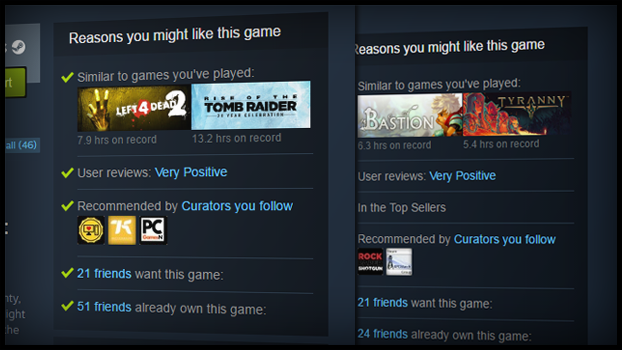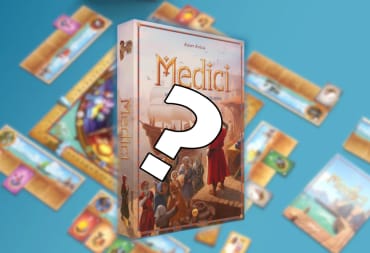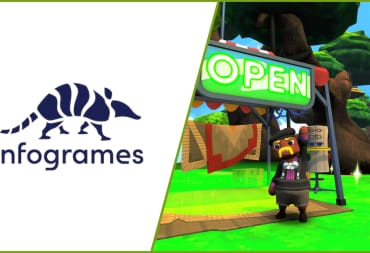Valve has posted a rather lengthy blog post talking about their vision for the future of the Steam store. This blog post is meant to inspire a dialog between Valve and the enormous installed user base of the popular online storefront. This blog is the first of three posts talking about Steam's future.
Whenever we announce a change to the Steam Store, we're always really interested to read the discussions that follow. Obviously we see a wide range of opinions on how good a job the Store is doing, but increasingly we're seeing that people have very different ideas of what its job even is - and what it should be.Valve is very much aware of their role in the industry, but Steam means different things for different people. Some players use the store just to purchase and play games, while others use it as a means to discover games they would otherwise have missed. The store also serves a lot of casual players who don't interface with the client's features beyond using it to play their games. Then there's the crowd of people that use Steam to participate in the development process of games via the Early Access program.
Steam is and has been a huge facilitator in the rise of multiplayer games, and the store is the place for many developers because of the enormous amounts of people logging into the service on a daily basis. The blog post explains that Valve wants to be open about what they want Steam to be and the resulting feedback from users will help shape the store's future.
This blog post aims to start that process by being the first in a set of three that explains our thinking around the Steam Store, and our plans for how we'll improve it with Steam Direct. We're going to talk about Store's goals, and how it executes them.Valve's goal is to serve all these different kinds of people and developers by offering a platform that works for everyone involved, from AAA developers looking for an easy way to get feedback from consumers to casual and hardcore gamers.
And ultimately, that is why the Steam Store is a design challenge. We could make the problem a lot simpler by choosing to ignore some set of players or developers, but we think there are already stores that have chosen to do that, and it's much more interesting to try and figure out how to build a single store that works for everyone.Valve has already begun work on adding these features over the past year or so by implementing features like tagging that allows players to tag games on the store so people with similar interest can easily find the kinds of games they're interested in. Players can also follow curators that recommend games to their followers, and the ability to follow specific games lets Steam's algorithm serve you with a bunch of new games you've probably not played before. Reviews made it easier to find out what players of a specific game think of it, removing the need to solely rely on previews and reviews by gaming outlets.
The blog post talks about Steam Greenlight, a feature where players could vote on potential hopefuls to get their games added to the Steam Store. This feature has allowed many games (not all of them good) to make their way to the Steam Store by letting potential customers vote on it. This program has seen its fair share of controversy due to voting shenanigans, but what it has also done is create communities around developers and games that would've never existed were it not for the Steam Greenlight program. While it is being phased out later this year, Valve believes that it taught them some valuable lessons.
To us, that confirmed our suspicion that no single, small group of people should be sitting in judgement over what is and isn't a good game. We should do some basic checks to make sure the game works, and we now do that on every title - but not insert our own tastes as a filter between what developers want to make and what players want to play.Valve has been constantly working on the Steam Store to add in new features that'll make it easier for players to find the games they want as fast as possible. The algorithm used to compile these lists of recommendations is a major focus for Valve and one that they will continue expanding upon ad infinitum.
It knows that it has a limited number of spaces it can use to show games to a player. It has some knowledge of the player, if the player is logged in and has a purchase / play history. It has some knowledge of the game, based on what the developer has told it and what previous purchasers of the game have said & done. It chews on all that data, and finally, decides which games it should show the player in all the various sections of the Store.To make discovery easier and better, Valve is preparing to reveal more of how the algorithm works so that consumer may better understand it. The blog post says that they've done a similar thing for DOTA 2's matchmaking algorithm previously.

As you can see in the image above, the Steam Store will start listing why it thinks the games it presents to you are within your interests.
We hope it will be useful whenever you're exploring the Store, but in particular, whenever you've navigated from an external web page directly to a specific game's Store page. In those cases, this section will help you understand whether or not this game is something the Store would recommend to you. In other cases, you might be more or less interested in something the store recommends if you know exactly why it's recommending it.If you want to see how this system works with your own eyes, you can do so right now via the Steam Store website or via the client. Valve are asking to keep a lookout for potentially wrong predictions. If this happens, you can tell Valve about it by sending them a message.
Like stated above, this blog post is only the first in a 3-part series where Valve takes the time to detail how Steam will be changing in the coming months. The next post will explain the Steam Direct publishing fee, a topic which has engendered much speculation and discussion on what it should be.
What do you think of Valve's approach to Steam? Let us know in the comment section down below!







